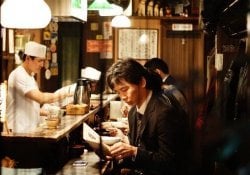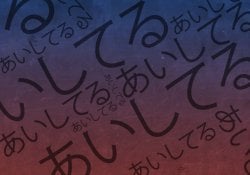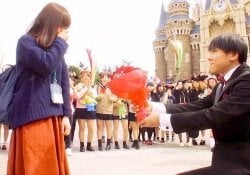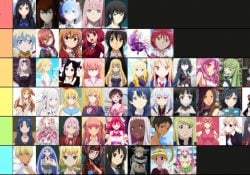Have you ever noticed when a kanji ends up having a reading as if it had dakuten? For example, in the word goddess, why me [女] + kami [神] becomes megami [女神] when gami isn't it a kami reading [神]? This phenomenon in Japanese is called rendaku and we are going to talk about it in this article.
The word rendaku [連濁] means sequential vocalization, euphonic change or sequential pronunciation. Rendaku is a morphophonological phenomenon of the Japanese language that regulates the pronunciation of the initial consonant of the non-iicial portions of compound or prefixed words.
Simply put, rendaku is a phenomenon that changes the reading of a hiragana to its version dakuten on certain occasions to make pronunciation easier and less confusing. as it doesn't exist dakuten in ideograms, it is difficult to identify when this phenomenon occurs.

For those who don't remember, dakuten are those 2 dots that look like accents that are in some hiraganas and katakana to transform their sounds like for example KA [か] turns GA [が] or TA [た] life Untranslatable [だ] and so on.
The word rendaku [連濁] is composed of the characters [連] which means to unite, connect, join, bind, take and [濁] which means sound, impurity or wrong.
Índice de Conteúdo
LIST OF WORDS RENDAKU
I cited some examples and tried to explain in detail how this phenomenon works. Some may not have understood it yet, but it's easy with some examples below:
Responsive Table: Scroll the table sideways with your finger >>
| without income | with rendaku |
| Person - hito - 人 | People - hitobito - 人々(this is equivalent to another 人) |
| Flower - hana - 花 | Flower arrangement - ikebana - 生け花 |
| temple - toki - 時 | Sometimes - tokidoki - 時々(it's 2x 時) |
| Paper - Kami - 紙 | Origami - 折り紙 |
| Japanese Character - Kana - かな - 仮名 | Japanese alphabet - hiragana - ひらがな |
| Sushi - 寿司 | Type of sushi - makizushi - 巻き寿司 |
| Temple - tera - 寺 | Mountain temple - yamadera - 山寺 |
| Blood - chi - 血 | Nosebleed - hanaji - 鼻血 |
| Fire - hi - 火 | Fireworks - hanabi - 花火 |
| Use - tsukai - 使い | Anxiety - kokorodzukai - 心使い |
| Deep - fukai - 深い | Deep - okubukai - 奥深い |
| Discount - hiku - 引く | Tax excluded - zeibiku - 税引き |
| Tooth - ha - 歯 | Crooked tooth - deppa - 出っ歯 |
| hate - kirai - 嫌い | Cat hater - nekogirai - 猫嫌い |
| Photo - shashin - 写真 | Blueprint - aojyashin - 青写真 |
| Country - koku - 國 | China - China - 中国 |
The examples above are the most popular when it comes to rendaku. Unfortunately there is no rule for when rendaku is applied to the word, it is often random, but there are sets of rules that can make it easier for you to understand how this phenomenon works.
The first thing you need to know is that if you write a word on the keyboard and forget about this phenomenon, the ideograms or kanji will still appear to be selected on the keyboard. This phenomenon is something more phonetic and happens most of the time with only kanji.
Most words that use the same kanji twice tend to use the rendaku.
There is a list of ideograms whose composition most often generates a rendaku. These words are called rendaku-lovers and some of them are: 花, 風呂, 寿司, 骨, 笛, and 箱;
When does a word use rendaku?
It is worth remembering that these rules that I am going to cite do not affect your learning of the Japanese language, they only serve to satisfy your curiosity. When you learn for example the word goddess [女神] you already learn it as megami and not mekami, then knowing or not the rules of rendaku won't change anything in your life.
Fortunately knowing the rules may or may not help you predict the rendaku in some unfamiliar word. We recommend knowing at least the basics of dakuten and handakuten to understand the rules created in this article.
Rendaku is most often present in a compound word. That is, when two words come together to form another word. There are exceptions, but pretty much every word that uses this phenomenon:
- They are of Japanese origin;
- It has no dakuten or handakuten in the compound word;
- It is not an onomatopoeia;
- The second word starts with K, S, T or H;
Words of foreign origin can have a rendaku as in the case of the word karuta [かるた] which comes from card and refers to a game of cards or cards. This exception happens in the word irohagaruta [いろはがるた]. It just happened because the word karuta was 100% absorbed into Japanese.
Lyman's law and lexical properties
A Lyman's Law claims that the rendaku does not occur if the second consonant of the second element is vocalized obstructively. Or simply put, it doesn't happen when the second consonant of the second already contains a dakuten.
Words of Japanese origin do not usually have two consonants with dakuten. These syllables with accents can also be called a muddy sound or a dakuon [濁音].
the compound word yama [山] + kaji [火事] cannot be pronounced yamagaji why ji [じ] is a dakuon. Other similar words are hitoritabi, tsunotokage and harukaze.
There are rare cases where the second word is made up of 3 syllables. In some of these cases the word may have a phenomenon where the dakuten changes from the second syllable to the first syllable. Some examples are: [した + つづみ = したづつみ] - [あと + しざり = あとじさり];
Despite many exceptions, words with lexical properties do not usually manifest the rendaku. Simply put, if you see any syllables with dakuten in the first word, it is likely that the consonant of the second kanji does not manifest rendaku. Japanese does not usually have two dakuten syllables followed by one another.
the compound word mizutama [水玉] is still mizutama because of the zu [ず], unlike akadama [赤玉] that transformed the size in lady.
The article is still halfway through, but we recommend also reading:
Dvandva semantics and suffixes
There is a phenomenon in some languages called Dvandva which are compound words but which convey the idea of two words as if they had "and" in the middle of them. In English we have the word bittersweet which is bitter and sweet or words like space-time which also fall into the category of Dvandva.
When two words come together to form a compound word of the dvandva category, the rendaku is not used. There are some exceptions of words that use rendaku, but they are two different words, for example:
- 山川 - yamakawa - Mountains and Rivers;
- 山川 - yamagawa - Mountain river;
A word that would fit perfectly in rendaku is white + kuro [白黒] that could be written shiroguro [白黒], but that doesn't happen because shirokuro [白黒] means black and white. already the word go + kuro will come unreliable [色黒];
In addition to onomatopoeias, words that are composed of a suffix or prefix also do not transform into a rendaku. See a list of suffixes below that completely kills this phenomenon:
- 一 [hito];
- 下 [shita]
- 二 [futa];
- 先 [saki];
- 唐 [kara];
- 土 [tsuchi];
- 姫 [hime];
- 御 [o, mi];
- 毎 [mai];
- 浜 [hamma];
- 潮 [shiyo];
- 煙 [kemuri];
- 片 [kata];
- 白 [shiro];
- 紐 [himo];
- 血 [ketsu]
- 黒 [kuro];
Usually the compound words that contain these ideograms with these readings working with a suffix or prefix block the possibility of the word being a rendaku.
These were some of the rules and tips related to rendaku. We recommend not being bound by these rules, because there are many exceptions among them. It is best to learn word for word without worrying about it.
I hope you enjoyed this article, I tried to make it as simple as possible. If you want to delve deeper into the subject, we recommend reading the English article by tofugo. If you liked the article, don't forget to share and leave your comments.






